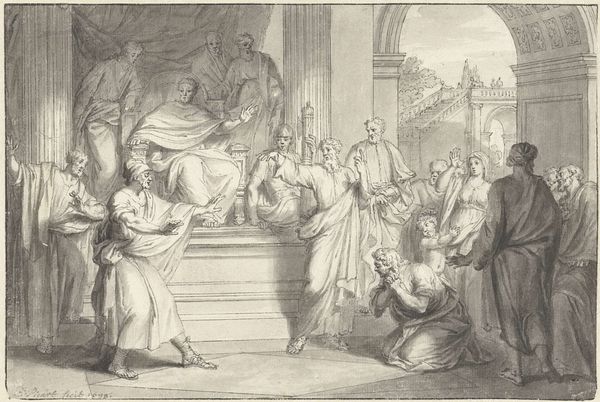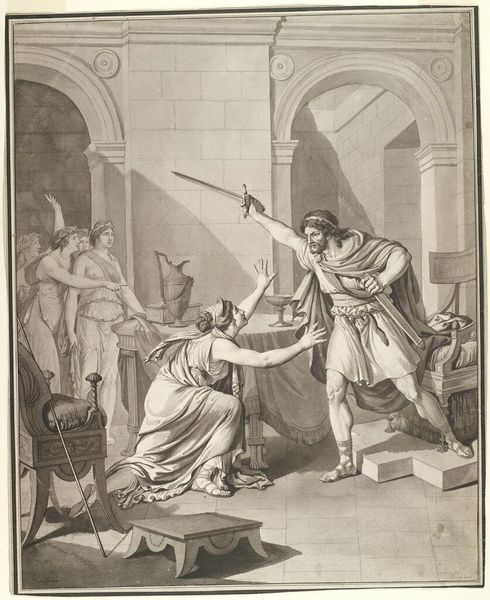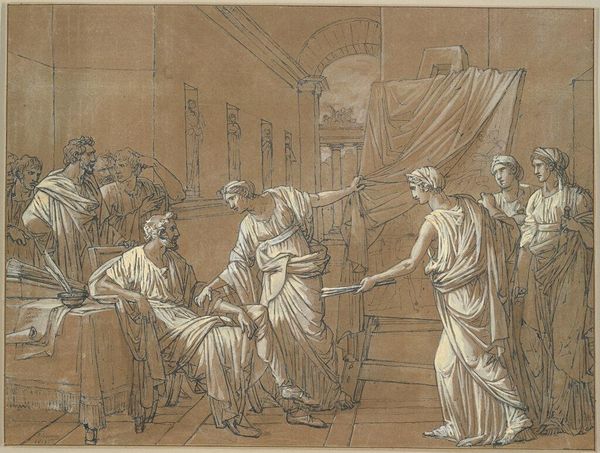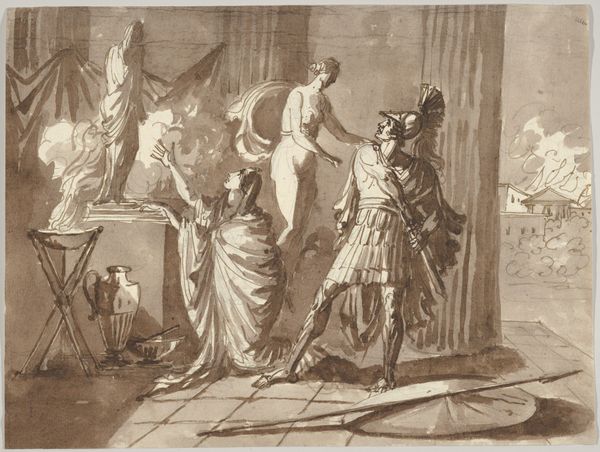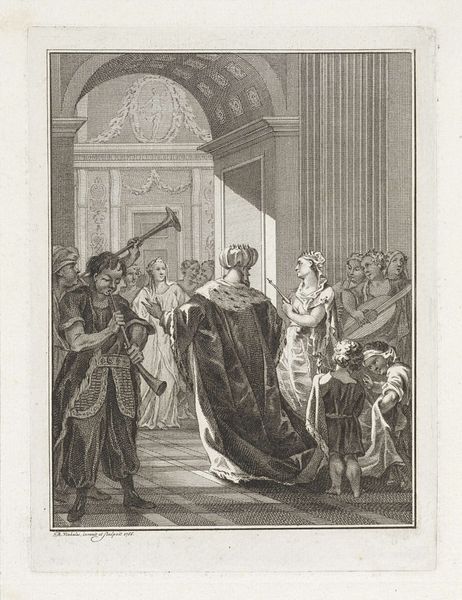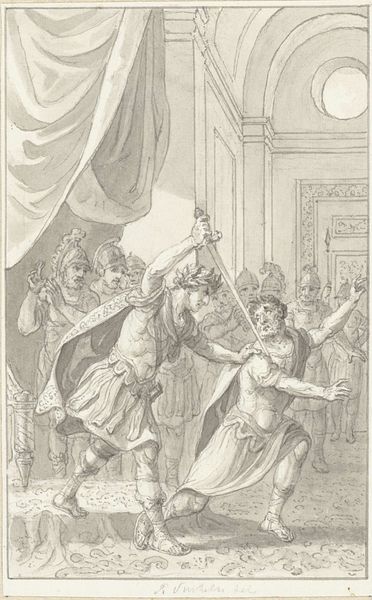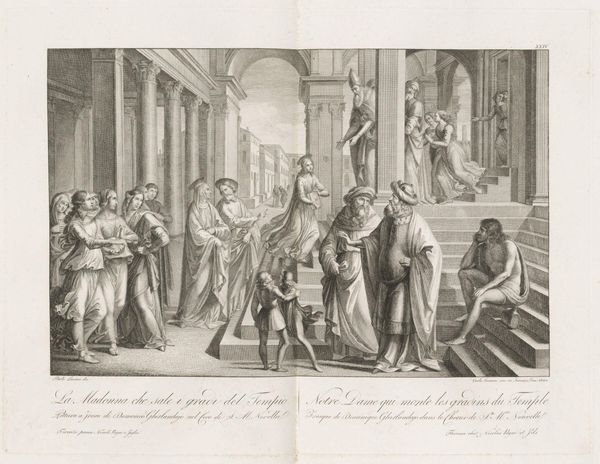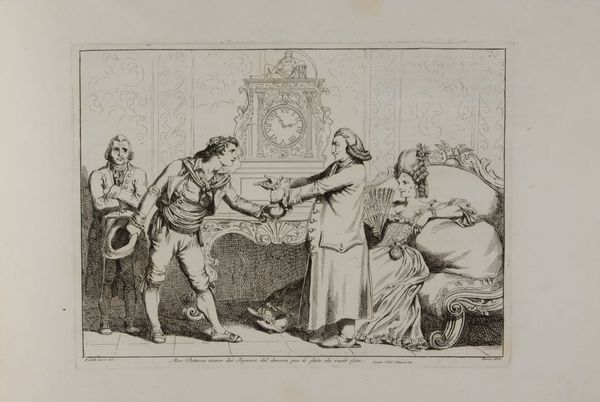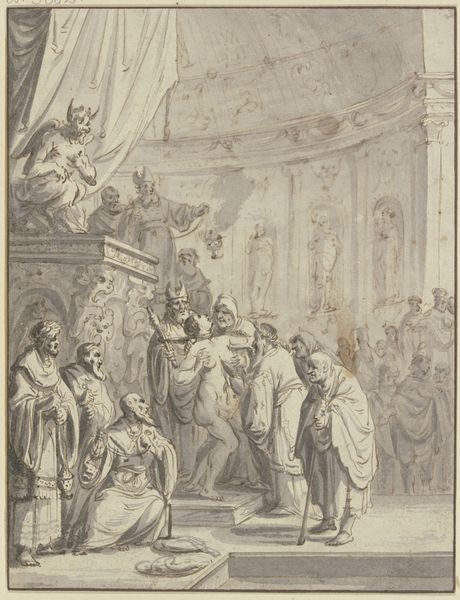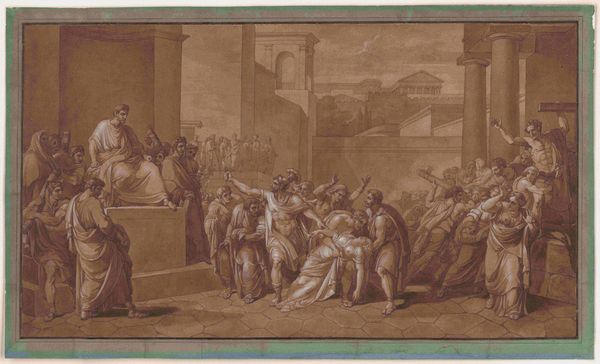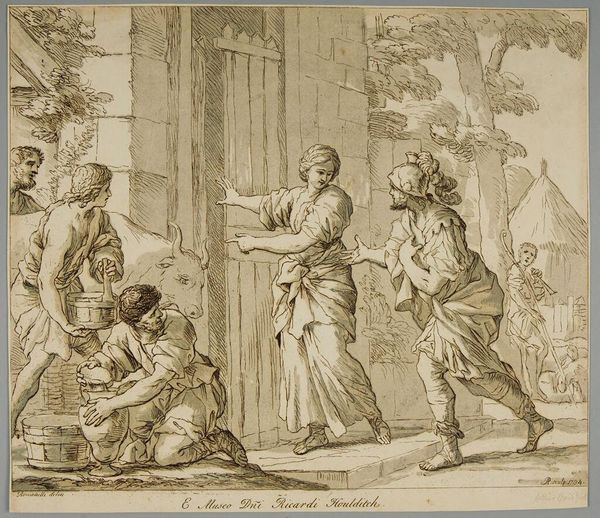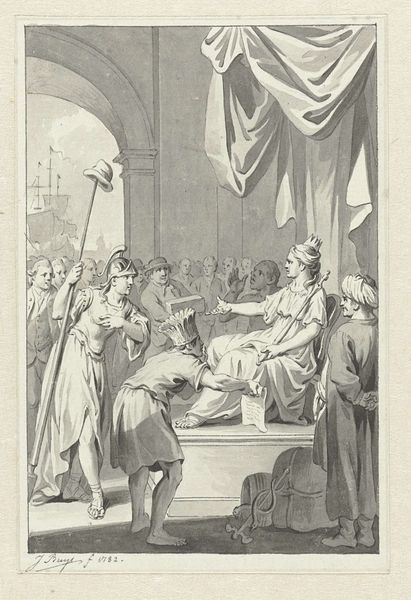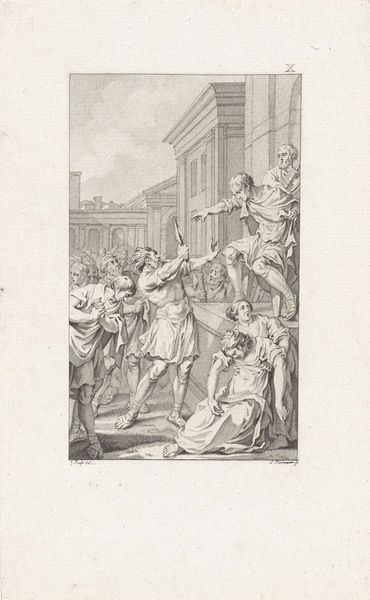
drawing, charcoal
#
drawing
#
neoclacissism
#
narrative-art
#
ink painting
#
charcoal drawing
#
figuration
#
form
#
charcoal art
#
roman-mythology
#
classicism
#
mythology
#
line
#
charcoal
#
history-painting
#
academic-art
Dimensions: 53.4 x 69.5 cm
Copyright: Public domain
Curator: This drawing, executed in charcoal and ink, is titled "The Oath of the Horatii, according to David," attributed to Jean Auguste Dominique Ingres. It presents a stark vision of Roman virtue. Editor: Yes, stark is the word. It’s emotionally powerful. I’m immediately struck by the contrast between the rigid, almost militaristic posture of the men and the drooping, grief-stricken forms of the women. It’s like two separate emotional worlds colliding. Curator: It’s directly referencing Jacques-Louis David’s famous painting. Ingres, working within the academic tradition, engaged with artistic legacy and created his own version. What stands out for me is how this composition became almost a stage for discussing political virtue, citizenship, and sacrifice within the context of post-revolutionary France. Editor: The swords themselves practically radiate symbolic energy, don’t they? Bundled together they represent strength in unity, and held aloft, an almost painful devotion to duty and patriotism. But the women, their weeping speaks volumes. They seem to embody the terrible human cost of such ideals. They are the emotional counterpoint. Curator: Indeed. And it is worth mentioning Ingres was operating in a system where the French Academy valued such historical narratives, especially those which visually promoted patriotism. Editor: You're so right! I keep coming back to the symbol of those bundled swords and the collective, united strength against the weeping figures embodying broken hearts. It reminds me of so many later symbols of unity in the face of tragedy, which are meant to offer comfort while simultaneously signifying loss and bereavement. Curator: It is interesting to think about that artistic choice as he positions himself within this neoclassical tradition and also comments on its implications through such stark emotional contrasts. It makes me consider its lasting echoes and how art and historical imagery continue to be repurposed throughout history. Editor: This brief viewing, it makes you aware of how much we keep reframing these potent themes of duty, sacrifice, and loss throughout different periods.
Comments
No comments
Be the first to comment and join the conversation on the ultimate creative platform.
